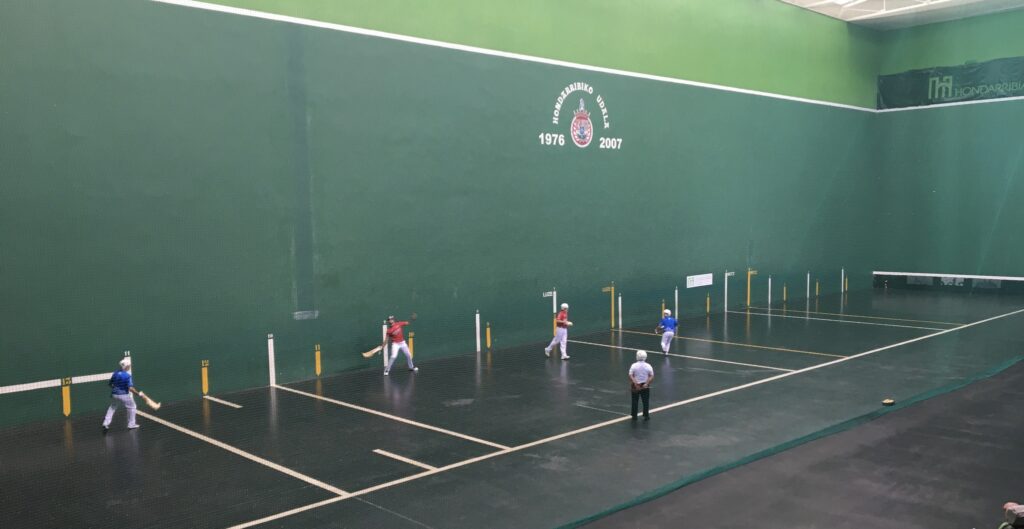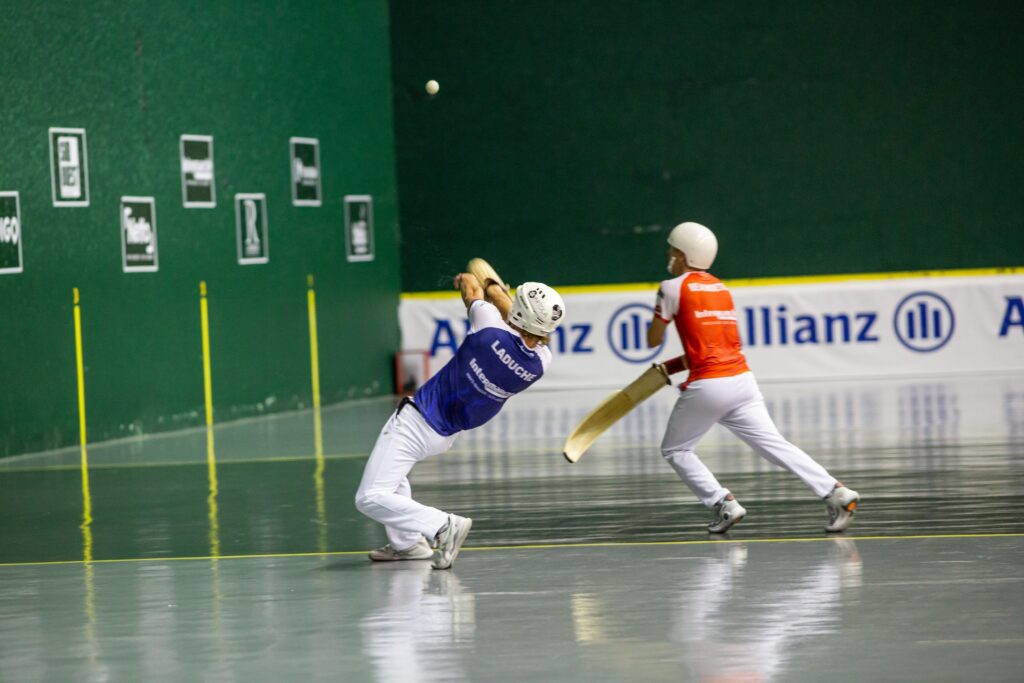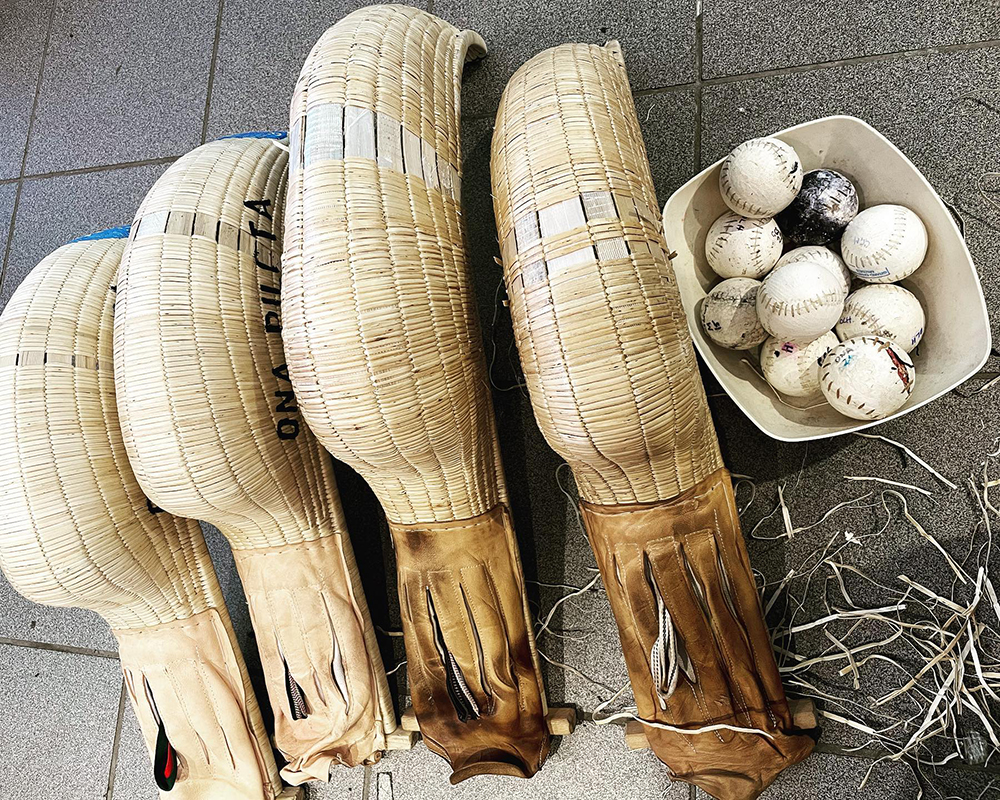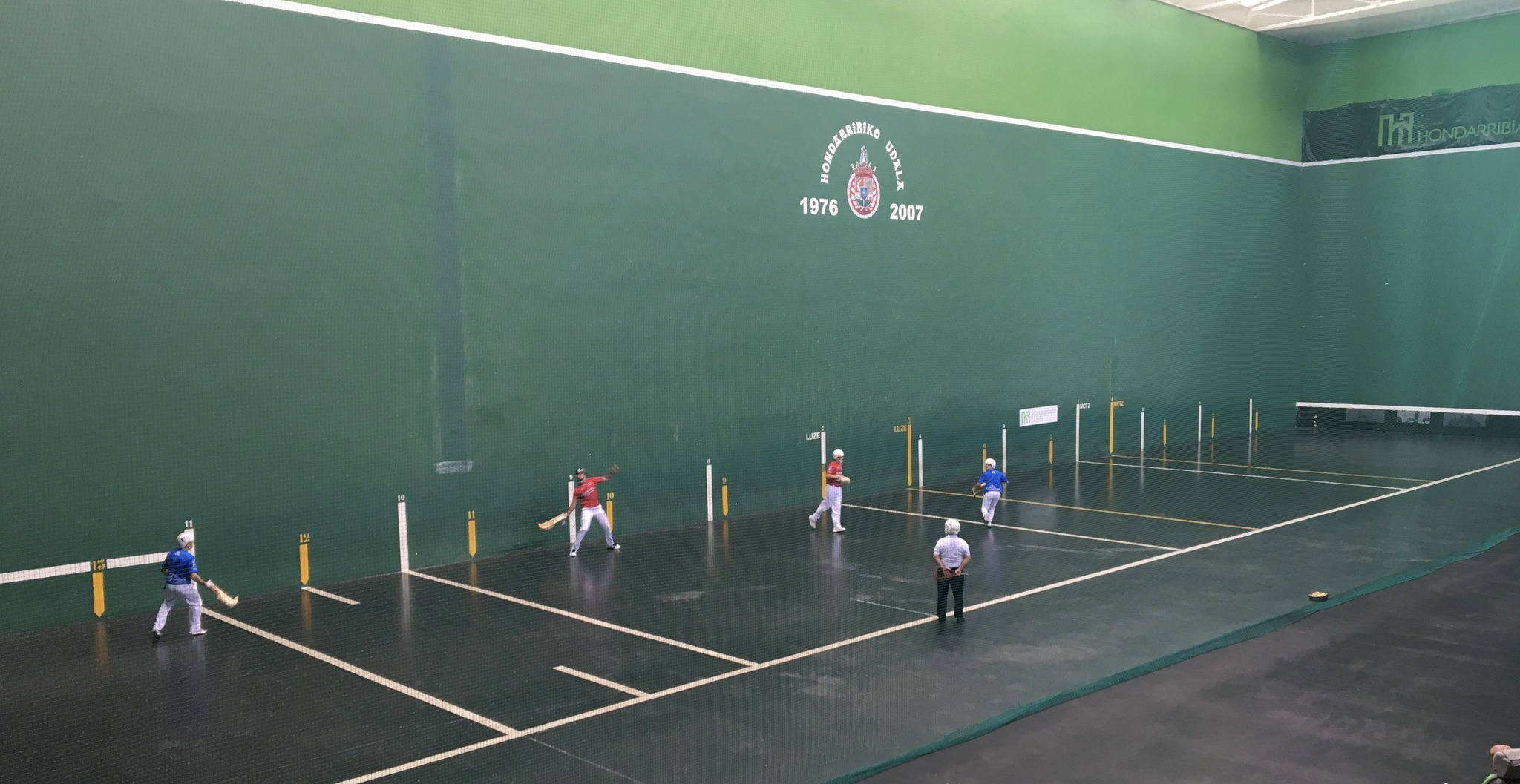The Basque Country is a place with many long-standing traditions. Traditional festivals such as La Tamborada in San Sebastian have been celebrated for hundreds of years.
But alongside the festivals and events, the Basque culture and traditions are deeply rooted in their sport.
Cesta Punta or Basque Pelota is one of the most popular Basque sports. It has a long history with roots of this class of game tracing back to ancient cultures. Today it’s still being played on the local frontón in Basque towns across the region.
In this article, we’ll run through the rules of cesta punta alongside some of the top things to know about this intriguing Basque sport.
How to play Cesta Punta
Cesta Punta is a ball game, and whilst there are different varieties of the sport, the aim is always the same – to throw the ball against the main wall of the court (called a frontón).
It’s comparable to squash, where the objective is to alternatively throw the ball against the main wall without letting the ball bounce more than once. You can do this on the fly, or after one bounce, but the catch and throw must be one fluid motion.
You lose a point if you:
- Don’t catch the ball cleanly
- Hold on to the ball too long
- Let the ball bounce more than once
- Interfere with your opponent
- Serve illegally
- Throw the ball out of bounds (past the court line on the right hand side)
The idea (like in squash) is to outsmart your opponent(s) by making it difficult to return the ball or by landing it where they cannot reach.
Typically, Cesta Punta is played with two players in a singles format and two pairs of players in the doubles format.
In Europe, the most common scoring format is played over three sets. With the first team to score 15 points winning each set.
Things to know about Cesta Punta
Now you know a little bit about the sport, here are some of the intriguing facts.
1. It’s a sport that goes by many names

Cesta Punta, Basque Pelota, Pelota Ball, Jai Alai. There are many different names for the sport which comes from the different areas it’s played.
However, the origins of the sport is from the Basque Country and Jai Alia is actually the Basque name, which translates to “happy holidays”! It’s the main name the sport is known for outside of Europe.
Cesta Punta on the other hand is the Spanish name. Cesta (basket) and punta (tip or point) literally translates to “pointed basket”, used to describe the long xistera (basket glove) the players wear when playing the sport.
There are also variations of the game where players use racquets instead of a xistera, or even their bare hands (Hand Pelota)!
2. It’s a fast sport

Cesta Punta can be a dangerous sport. It’s actually famed for being the fastest ball game in the world!
In the professional game, the rock hard pelota (ball) can reach speeds of 180 mph (300 km per hour)! You’ll want to keep out of the way as that can do some damage if it hits you.
When watching live, there’s a loud whooping sound that can be heard with every throw. And when the pelota hits the main wall it sounds like a gunshot!
3. The Cesta is made with reeds from the Pyrenees

The equipment in Cesta Punta has rarely changed over the long history of the sport. The only real difference between now and hundreds of years ago is that the players wear helmets to protect themselves from the pelota!
The cesta or reeded basket glove that the players use is traditionally made from reeds from the Pyrenees.
They are usually handmade and it can take up to 30 hours to make one. It’s no wonder that they cost on average around €500!
They don’t last long either! Given the high speed of the sport, one bad catch can break the frame of the xistera, resulting in an expensive repair job! Typically, they need replacing (or repairing) every four months.
4. It’s a popular sport outside of Spain and the Basque Country
In Europe, Cesta Punta is mainly played in Spain and France, with a strong concentration in the Basque Country. When you travel around the Basque Country, you’ll find a frontón in almost all of the small Basque towns.
However, it also has roots outside of Europe. The sport is played in a small concentration of Latin American countries alongside parts of the United States.
In the US, interest in the sport peaked in the 1980’s. The typical US format differs slightly, with an interesting round robin style.
It’s made up of eight players competing, but only two players on the court at any one time. The evolution was largely developed around gambling which is what made the sport particularly popular.
